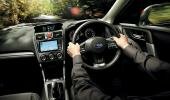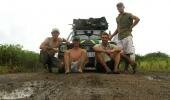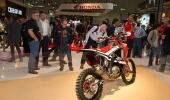Words: Greg Gearing | Photos: Greg Gearing, Guy Ducasse & Paul Gordijin
There is something special about your first car. Although you may own bigger and better cars later on in life, you don’t ever seem to be able to recreate that relationship you develop with your first set of wheels. Pumzille (Pumz for short) was my first love and what a character she was. She came in the form of a white 1991 VW Citi Golf, an iconic figure in the South African automotive history and a car so many students have come to love over the years! Pumz was special for a number of reasons, not least of all for her ability to keep on going regardless of the prolonged abuse she received in the hands of a somewhat abusive owner and his friends.
Photo credit: Greg Gearing, Guy Ducasse & Paul Gordijin.
After enduring a tough digs handbrake turning competition, her handbrake finally gave up the ghost and snapped. This led to a tragic, unmanned trip down a hill and into a tree, resulting in a severely smashed front end. The timing wasn’t great, as we planned to go on a road trip in a couple of days’ time and naturally, Pumz was the vehicle of choice. With panel beaters not being an option due to our tighter than a hipster’s skinny jeans student budget, we set about giving Pumz a much-needed facelift. The solution was rather simple, but ingenious, well at least we thought so. We attached one end of a heavy-duty ratchet strap to the front of Pumz and the other to my bedroom wall and slowly pulled the whole front of the car straight. We then hammered the bonnet straight with a 10-pound hammer until it lined up well enough to latch closed. After a short test drive showed all was well with the car’s radiator and basic mechanics, we set to work on transforming Pumz into the ultimate student overland vehicle.
The roof-top luggage system was made from some old wooden planks and plastic creates we found lying around and the rule was clear, one create per passenger to pack your kit in, one create for beers, and the last create was for the potjie pot, braai, and other essential items. We then added a couple of bits here and there to enhance the aesthetic appeal of Pumz and we were ready to go. To give a little context to the trip, it was coming to the end of our varsity careers and one of our friends, Matt Norris (aka the Beast) was leaving for New Zealand to join his family, who had immigrated a few years earlier. This was the final chance for Paul Gordijin, Guy Ducasse, and me to spend some time with him travelling around Natal. Our first stop on the trip was Monks Cowl, in the central Drakensberg, to spend New Year’s Eve with a bunch of friends. We spent the afternoon swimming and jumping into the crystal clear waters of the Sterkspruit pools before moving on to gaze upon the hugely impressive Sterkspruit Falls. The New Year was ushered in under a blanket of stars as the mighty uKhahlamba (the Zulu name for the Drakensberg, meaning ‘Barrier of Spears’) encircled us, casting shadows as the moon rose over the horizon.
New Year dawned and we began to prepare for our departure to the next destination, Ithala Game Reserve, situated in the valley of the Phongolo River and surrounded by the mountainous thornveld of northern KwaZulu-Natal. The drive from Monks Cowl to Ithala is just short of 300 km and along the way we passed some of South Africa’s bloodiest battlefields. From the Anglo-Boer War battle of Spionkop just outside Ladysmith, which was the scene of a futile engagement where some 600 men from both sides lost their lives, to the remarkable battle of Isandlwana on the outskirts of Dundee, where the English suffered one of their worst defeats ever at the hands of the Zulus. Pumz faced a battle of her own as we drove toward a bank of black clouds indicating a monstrous summer thunderstorm ahead. Stopping briefly to waterproof our crates as best possible, she soldiered on enduring the torrent of rainfall that seemed to batter us from all sides.
We arrived in Ithala as the sun began to peak through the clouds, ensuring sundowners by the river would not be a let down. Ithala offers amazingly diverse habitats that support a multitude of different species, MAKING game and bird viewing a real treat. We spent the evening around the potjie pot reminiscing about all the adventures we had enjoyed during our time as students, which is exactly what these types of road trips are all about. The next morning started with a quick swim in the river, the road trip equalivent of a hot shower. Having become experts at reassembling our elaborate roof-top luggage system, it wasn’t long before we were once again on the road, en route to the world-famous dive destination of Soldwana Bay, on the North Coast of KwaZulu-Natal.
It would be remiss of me not to mention one of the purchases of the trip at this point. Everyone knows that a true South African braai needs to have a healthy helping of steak, however we also know how expensive steak can be. One of the missions of the trip became finding the cheapest chuck steak - a cut that most people discount as being stewing meat at best, but is actually one of the tastiest cuts, even if it as tough as leather. The worthy winner was Louwsberg Butchery at R37/kg. Yet it wasn’t the chuck steak that warmed our hearts to Lousberg, but rather the amazing deal we found; for just eight South African rands, one could purchase 20 pope's noses (or chicken bums).
With supper taken care of, we could focus on persuading Pumz onward toward the coast. A much-needed toilet break on the side of the road turned into an adventure of its own. While attending to the call of nature, we noticed a dirt track leading up the side of a mountain. After a quick recon, a mutual decision was reached; we would take Pumz up the track to check out the view. Despite bashing her sump rather badly, luckily we did not pierce it, Pumz made it to the top with little fuss and the view that greeted us was spectacular. As we crested the top, we were presented with a magnificent picture of the Pongola Poort Dam, not a bad place to share a midday beer.
The remainder of the day’s drive was fairly eventful, as we found ourselves in the midst of another summer storm that turned the usually good gravel road into a slippery track. At one stage, water started to pour in through Pumz’s doors as we crossed what we thought was a small puddle, but turned out to be a waist-deep pond. Like always, there were no complaints from Pumz as she continued to stride on.
We eventually arrived at Sodwana Bay and were greeted by what seemed to be half the Jo’burg population and their big 4x4 vehicles. It’s worth noting that when planning a trip to Sodwana Bay, peak season is extremely popular and can be unpleasant due to the sheer volume of people moving about. We made our way to the KZN Wildlife Campsite, but our stingy student budgets persuaded us to find cheaper accommodation, so we went in search of a possible bush camp! We started to become desperate when, after driving around for a while, we had still not found a suitable spot and it was starting to rain again and daylight was fading fast.
As we drove through a small village, we noticed a house with two men sitting on the porch and decided to ask them if we could camp in their garden! At first they were pretty suspicious and who could blame them, imagine four umlungus (white men) in ‘wife beaters’ (sleeveless vests) asking to camp in your garden for the night. It turned out that one of the men was actually the brother of the chief for the area, and having heard our story was happy for us to spend the night there. It wasn’t long before we had set-up camp and were playing a game of cricket with his kids.
That night it poured with rain and we made a makeshift shelter using our bed rolls to ensure we had somewhere to cook our pope’s noses! The children were so intrigued by us that they left the dry comfort of their house to join us under our shelter, although they didn’t seem too impressed with our choice of dinner. This scenario summed up the beauty of the trip; never in our wildest dreams could we have imagined camping in the back garden of the chief’s brother, while sharing chicken bums with his kids.
Photo credit: Greg Gearing, Guy Ducasse & Paul Gordijin.
Day three of our road trip should have been straight forward, a relatively short 170km drive to St Lucia, a small town that forms part of the Isimangaliso Wetland Park. Thirty kilometres into the drive, Paul pointed out an alternate route that would take us through Phinda Private Game Reserve.
The chance to see more game was enough to convince us to turn off the tar road. With all the rain that had fallen over the past few days, the alternate route was a mud track and it wasn’t long before Pumz was stuck. No matter how much we pushed and spun her wheels, she was in no hurry to give up her mud bath. After two hours of trying to reconstruct the road by digging and laying rocks, we finally employed the services of a 4x4 to pull Pumz from her wallowing spot. One rather funny roadblock later, a police woman was determined to find something wrong with Pumz. Luckily, she failed to check Pumz’s handbrake. We arrived in St Lucia, which boasts massive, wide-open beaches. This coupled with a strong northeaster created the perfect conditions to do some power kiting.
Later that day we splashed out and got ourselves an actual campsite for the night, selecting a great spot under a large tree that was big enough to house all our hammocks. To keep in line with our big spending, we enjoyed a meal of red wine and a roast chicken that was prepared on the Cobb braai. This felt like a fitting way to spend the last night of our road trip. However, the serenity of the evening was abruptly brought to end when at 2 a.m., while we were all fast asleep in our hammocks, the heavens opened. Initially I thought it was a bush baby relieving himself, but after a short while it became clear that it was rain. There’s nothing worse than having to try put up a tent in the pouring rain while you are still half asleep. To add insult to injury, the monkeys decided to raid our food supplies the next morning. Fortunately, it was the last day of our trip and the loss of food wasn’t a big issue.
We packed Pumz for the last time and prepared for our journey back home. Reflecting on the trip, we could not have asked for a better adventure to bid Matt farewell. Over the five days, we had experienced some of the best countryside in KwaZulu-Natal, from the mighty Drakensberg Mountains, to the striking thornveld of Ithala and the untouched coastline of northern Natal. Throughout the trip Pumz had maintained her amazing work ethic and proved that you don’t need to be a big 4x4 to complete a proper overland trip, you just need a little character.
Travel Tips
Places to stay
Ezemvelo KZN Wildlife has a number of campsites throughout KwaZulu-Natal that offer good facilities in great surroundings. You can book online by visiting their website www.kznwildlife.com or send an email to
Weather
When travelling in KwaZulu-Natal during summer remember that although it is a great time of the year weather wise, you get a lot of rain, so be prepared especially when camping.
Activities to do
• Birding - all the spots visited in this article offer fantastic opportunities for birding enthusiasts.
• Scuba diving/snorkelling Sodwana offers some of the best scuba diving spots in the world, as well as quality snorkelling opportunities.
• Boat safari on the St Lucia Estuary - Enjoy the natural beauty of the estuary, home to hippos, Nile crocodiles, birds of prey, and much, much more. Visit their website www.stluciasouthafrica.com


